
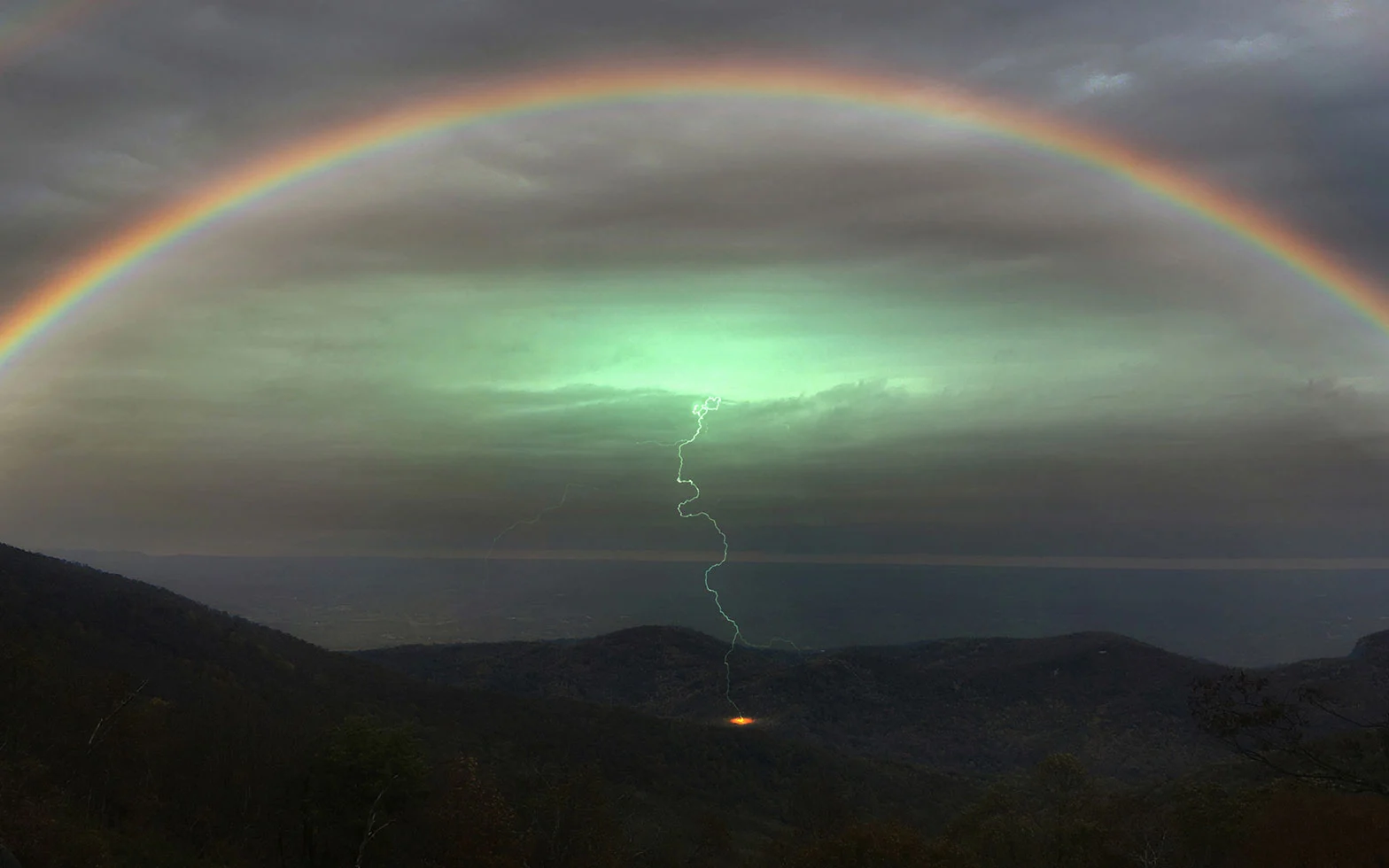
For artist and musician Female Pentimento, discovering the right circumstances needed to make their best work has been a journey of radical pragmatism: finding success and meaning on their own terms, defying the traditional trajectory of an emerging artist. Here, they tell writer Gem Fletcher how they took the religious symbolism of their Southern Virginia upbringing and reclaimed it, using it to better understand themselves and their place in the world, and to advocate for climate awareness.
Designing a practice that prioritizes care, independence and anonymity is a guiding principle for Nathaniel, the Brooklyn-based artist known as Female Pentimento. “When it comes to my work, I prefer not to be at the forefront as a person,” they explain. “Having a moniker gives me some distance. It helps the work be less about me, even though it is sometimes quite personal.” The moniker—inspired by Picasso’s “The Old Guitarist,” a famous pentimento in which the ghost of a woman can still be seen despite the overpainting of a male figure—is not just about cultivating freedom of expression. It also offers a conceptual way for Female Pentimento to explore their gender queerness.

“I’m fascinated by the feminine dimension of heart, and the gesture of a moniker speaks to me as a poetic way to explore the idea of being one thing on the outside and feeling something very different on the inside,” they say. “I grew up in Southern Virginia, a tumultuous geographical location to exist in as it wasn’t particularly open or queer-friendly. Couple that with my Mom being a minister, meaning we landed in conservative ideological environments, and all the hostility was something I had a hard time grappling with.”
In contrast, their work is a haven—a portal to transcend boundaries and binaries—using nature to understand themselves better. Through their celestial images, born from a hybrid of photography, post-production and AI, we experience transcendent beauty and cathartic horror told through the depiction of ethereal creatures and otherworldly landscapes.
I see my creations as a form of advocacy; my work carries an urgent call to arms to protect all forms of life.
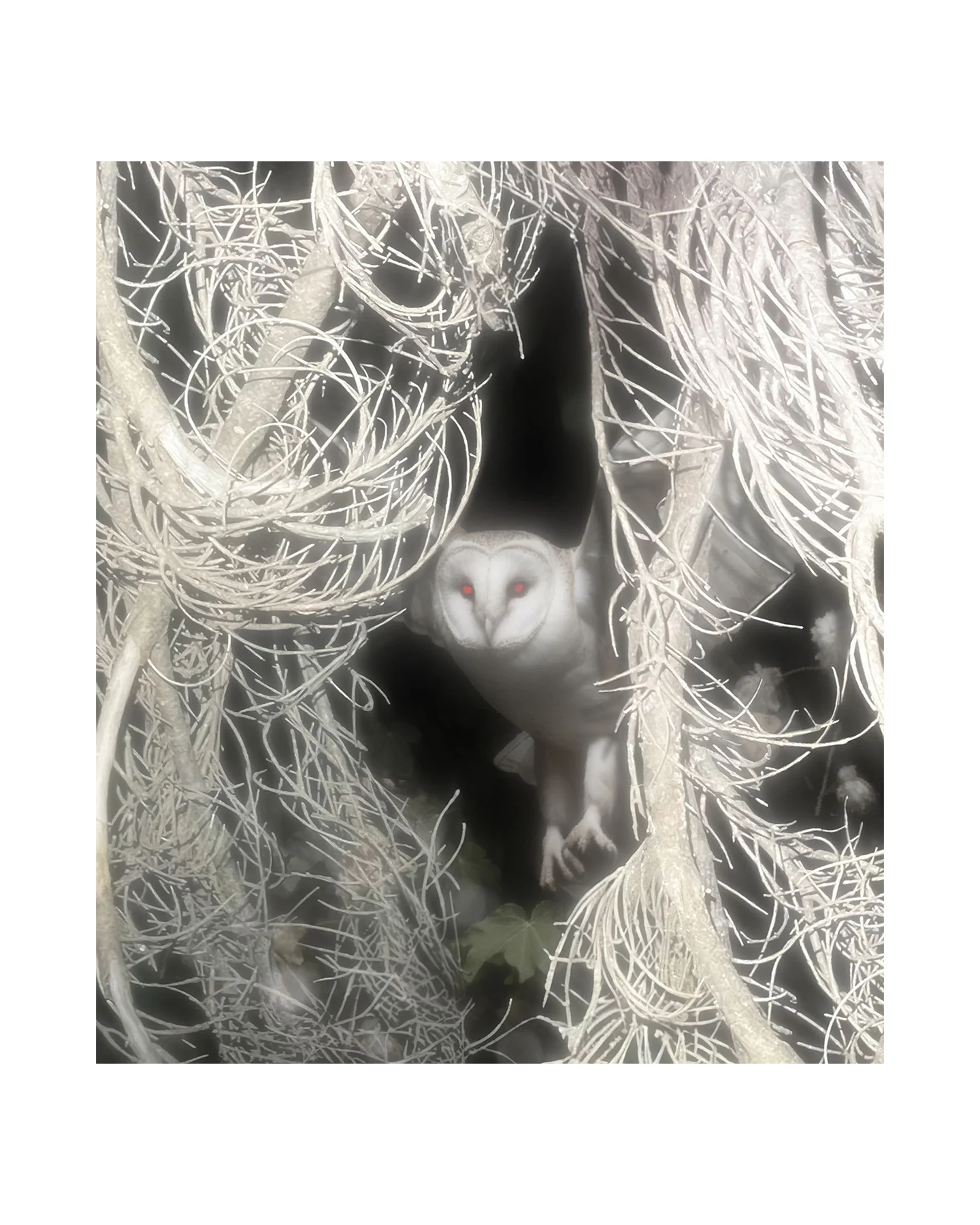

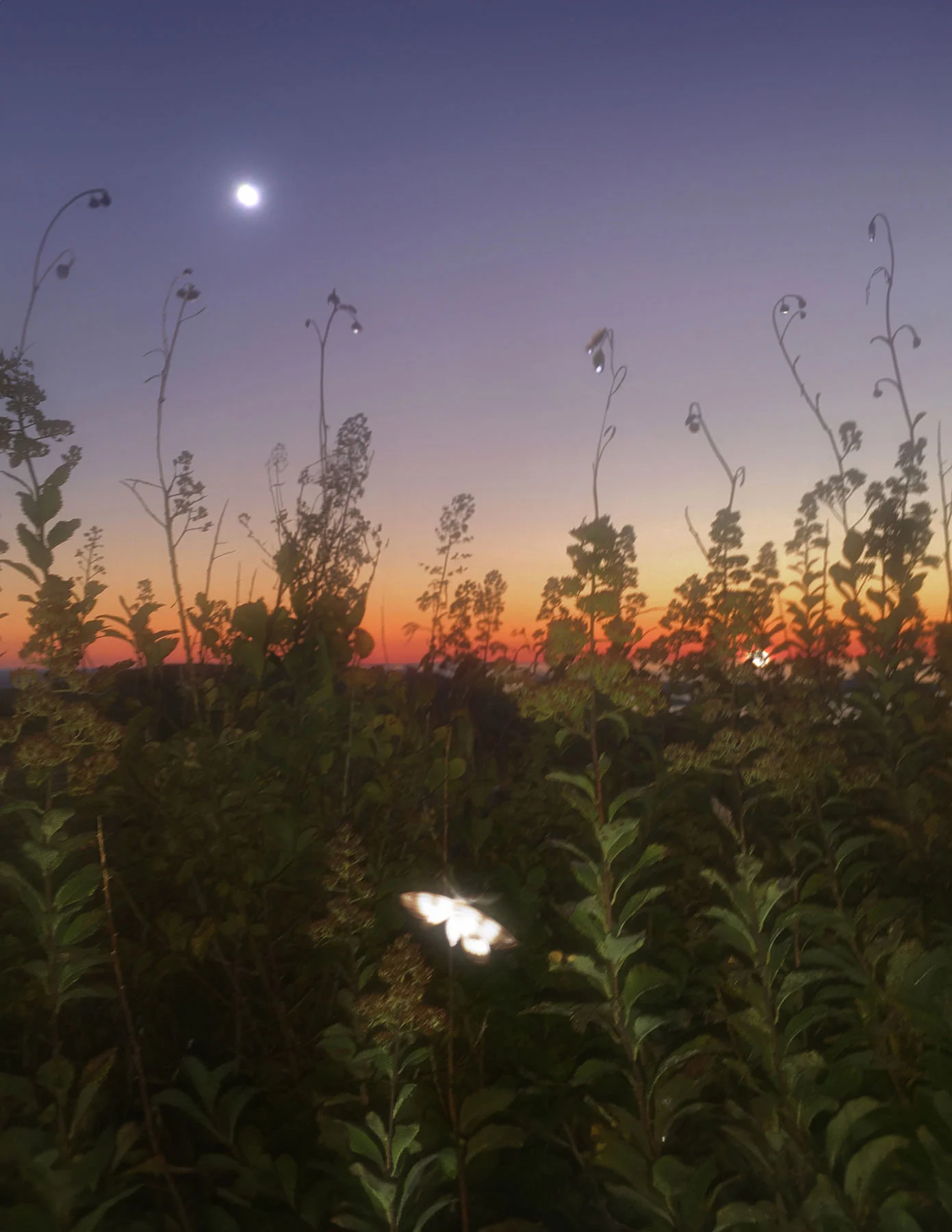
Light, a protagonist in its own right, manifests as beams, orbs and caustic patterns, offering the artist an alternative reality in which they liberate themselves from the corporal form. Taking cues from spiritual iconography, their visual language is deliberately ambiguous in tone, blurring the lines between the real and the supernatural.
“For better or worse, the roots of my imagery are entrenched in the Christian symbolism I inculcated as a child,” Female Pentimento says frankly. “Yet, I see my work as an attempt to reclaim this aesthetic and build something that is a more genuine reflection of me and where I am today.” This sense of radical pragmatism is a throughline in their approach.
They wanted to uphold the integrity of Female Pentimento, so they also have a day job in design to pay the bills, freeing them up to be more selective about their collaborations. Despite the stigma, they shoot on an iPhone because it offers them an unfettered immediacy to the environment that feels more like “an extension of their eyes.” These seemingly small decisions have a cumulative impact on the artist who has risen to prominence in the last few years by trusting their intuition and defining their own path.
We can’t concern ourselves with the work’s reception. We must devote ourselves completely to the idea and then let it go.

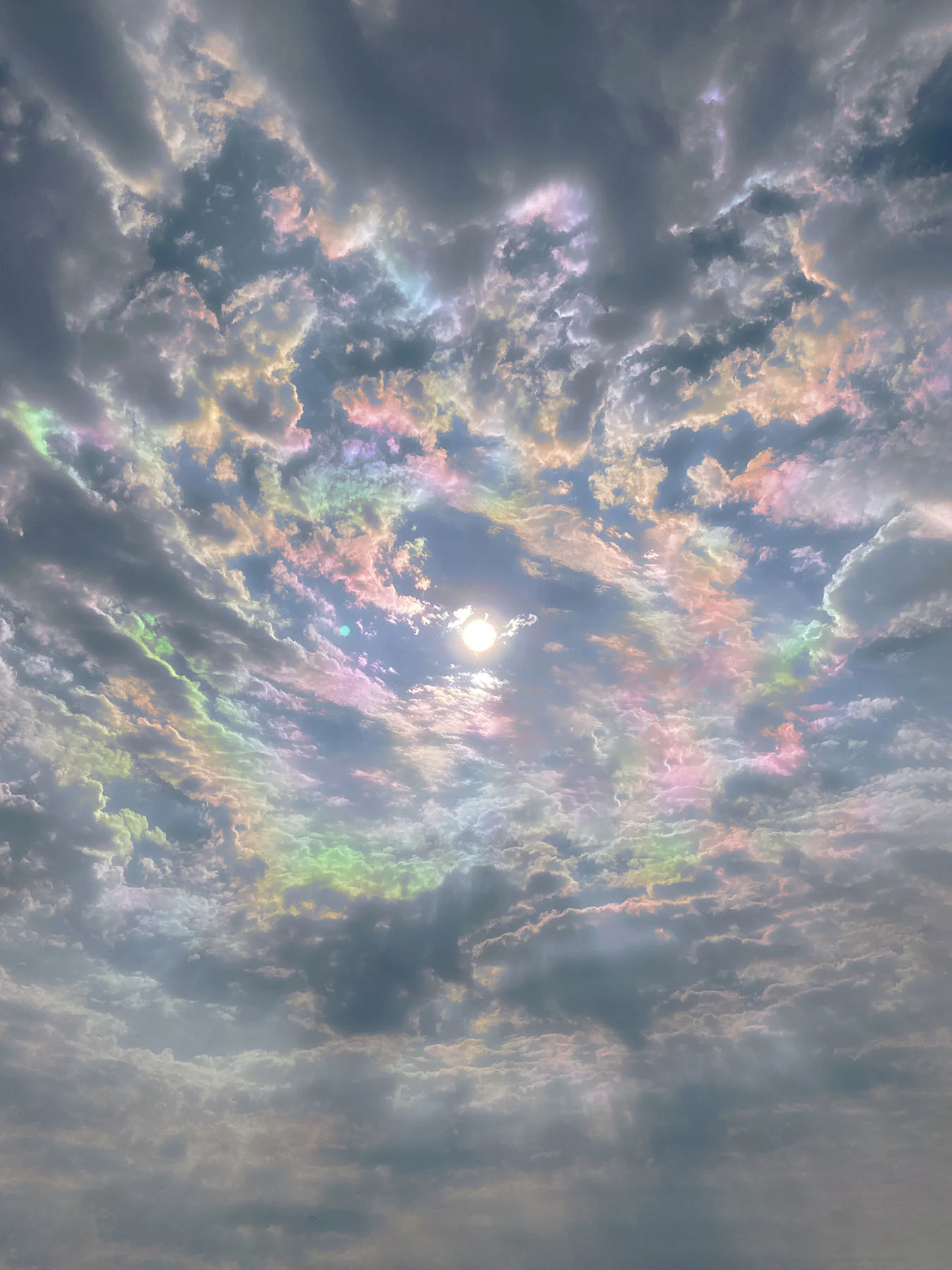
A byproduct of having a moniker is the ability to decenter professional accomplishments as a primary source of identity and self-worth. Despite the pressure on emerging artists, Female Pentimento isn’t rushing to hit specific goals. In fact, taking their time is the only way they know how to make work. They don’t sketch out ideas or plan ahead, finding that process too rigid. Instead, their “intuition-based creations” parallel free association writing, tuning into a stream of consciousness and building images element by element.
Every visual begins with a source image from Female Pentimento’s archive—a vast collection of photographs made throughout the United States and on their travels in Costa Rica, Ecuador and Mexico. “If I don’t have a particular angle that I’m looking for,” the artist explains, “that’s when I interface with stock photography or AI to get closer to what I want.” The visual material is then delicately layered together in a meditative process that demands patience and deep focus. Some images come together quickly, while others take months to land.
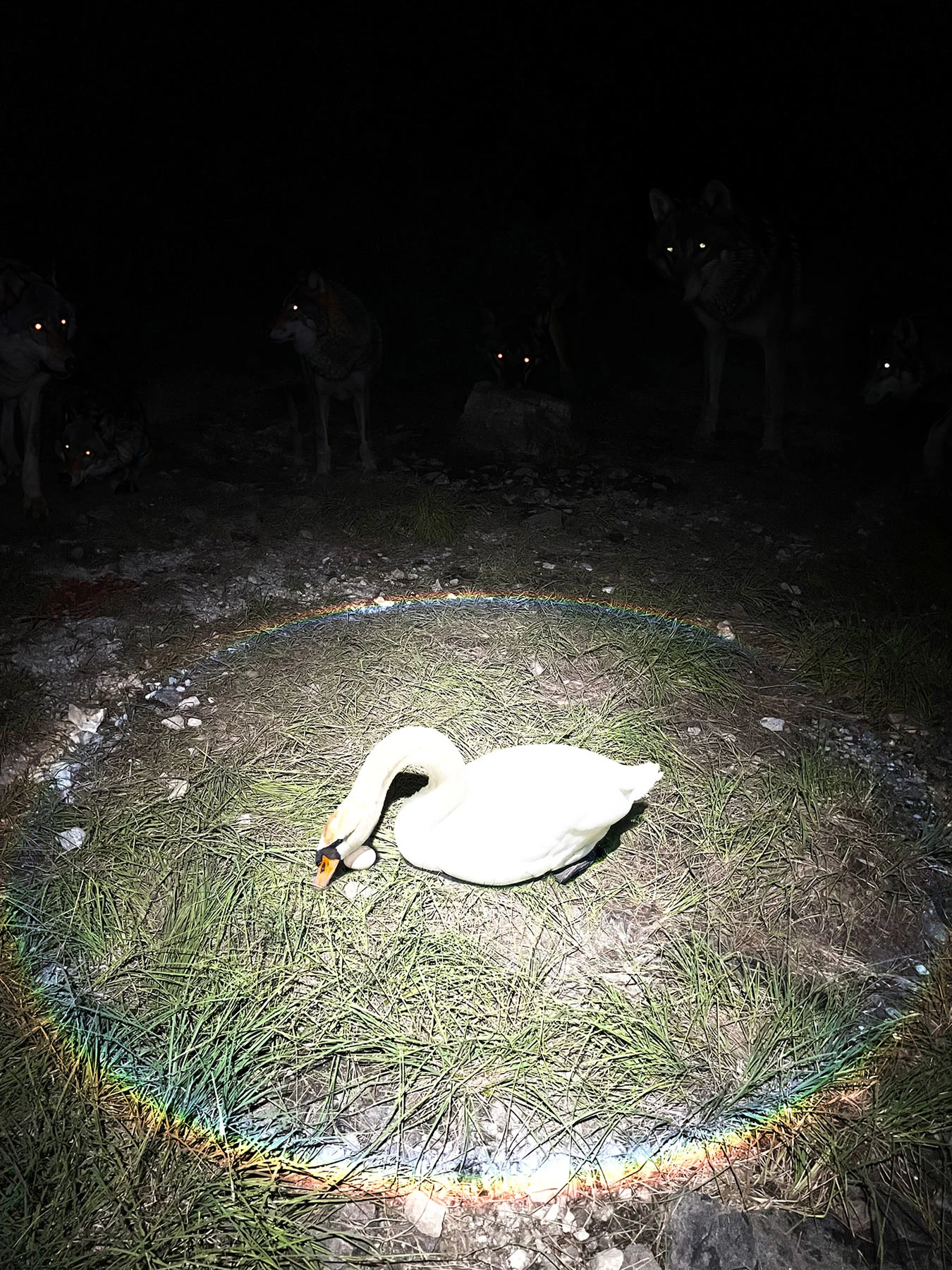
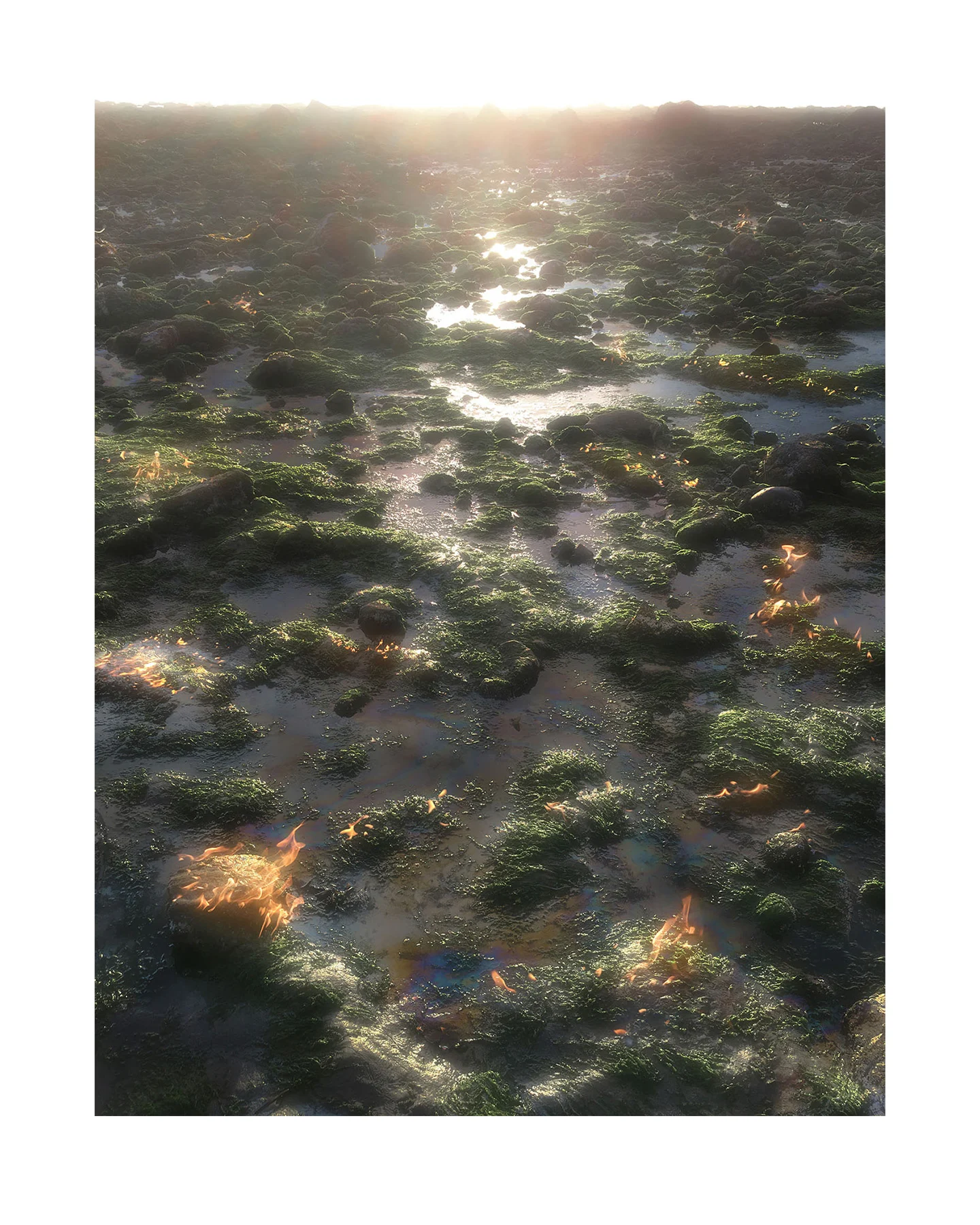
Over time, these poetic visual collisions have become imbued with a new intention—to reckon with the climate crisis and the increasingly complex dynamic between humans and the land. “I see my creations as a form of advocacy; whether it’s at the forefront of the work or more discrete, every piece is a plea to conserve and defend what we are so rapidly losing,” they explain. “There is no separating art from politics in the Anthropocene. Creation is intertwined with conservation. My work carries an implicit yet urgent call to arms to protect all forms of life, whether depicting a world I want to inhabit or offering apocalyptic landscapes as cautionary reminders of environmental destruction.”
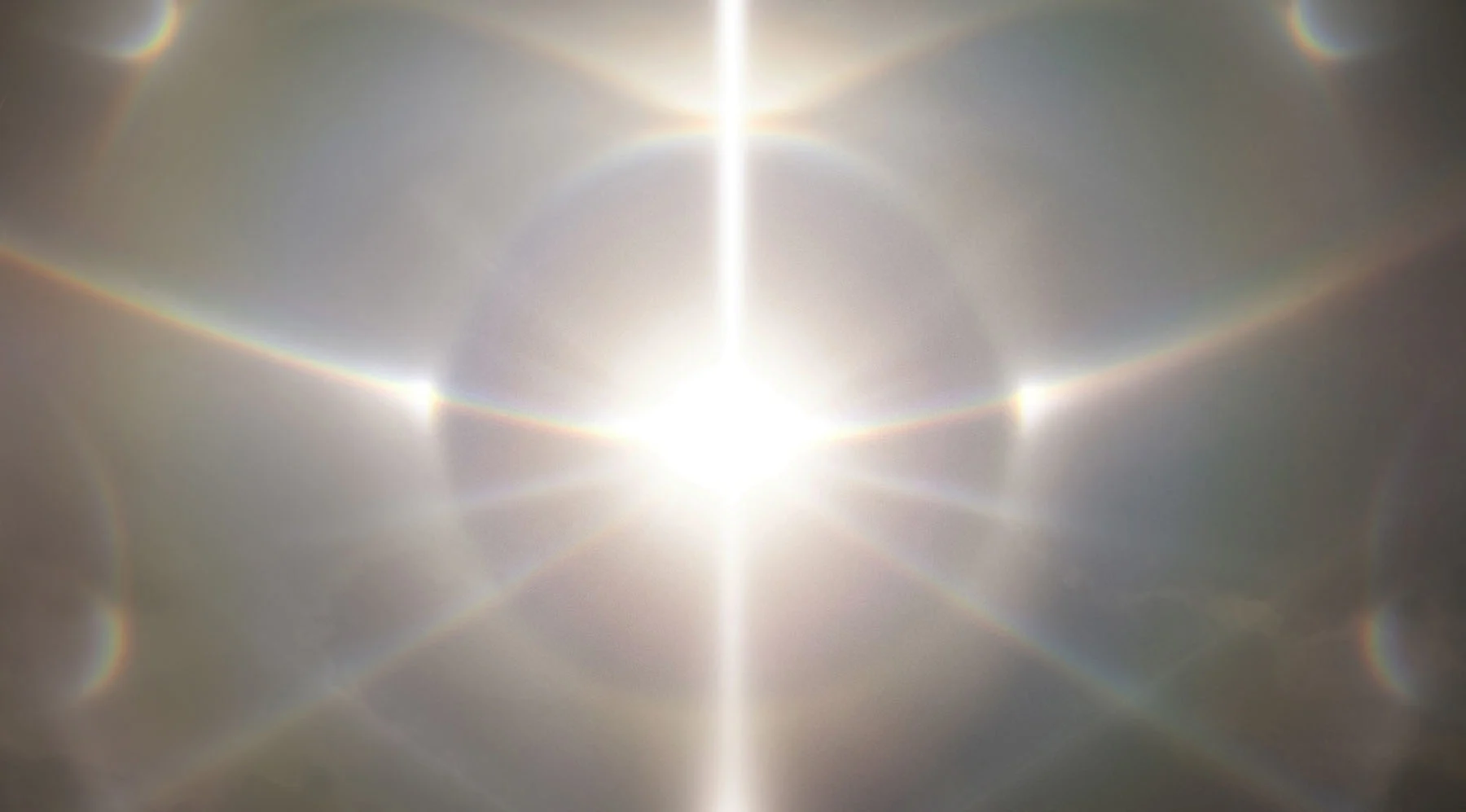
As the work has gained traction (Female Pentimento has nearly 500k followers on Instagram), it has brought up new challenges for the artist. “As creators, we’re just following an instinct, trying to see where that leads us,” they say. “I struggled as my audience grew with the idea of censorship, having ideas that weren’t welcome or deemed appropriate. Producer Rick Rubin’s sentiment—the audience comes last—helped me through this confusing time. As creators, we can’t concern ourselves with the work’s reception. We must devote ourselves completely to the idea and then let it go.”

